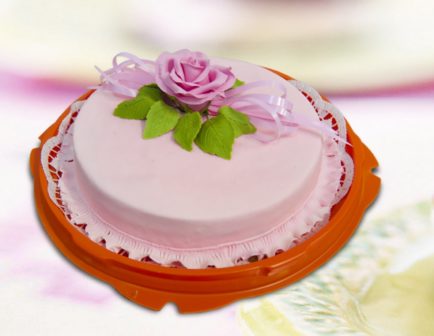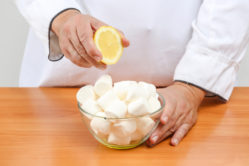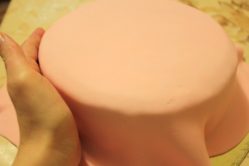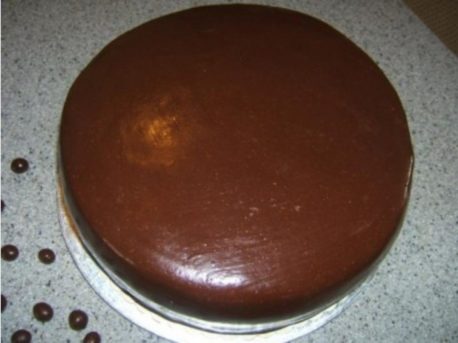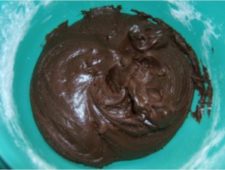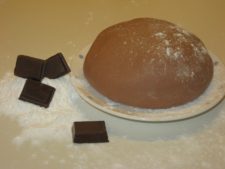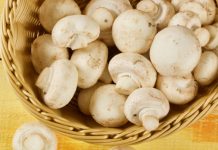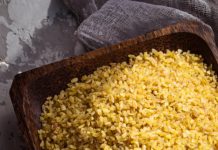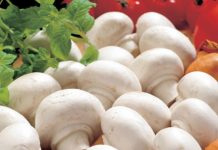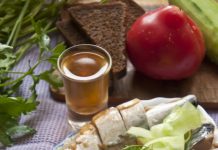In the design of confectionery products such a sweet material as mastic is widely used, which allows you to create breathtaking sweet masterpieces. A sweet pasta is prepared on the basis of gelatin, honey, condensed milk, chocolate, but marshmallow mastic is most widely used. All the intricacies of its preparation will be described below.
Material Content:
What is marshmallows
Marshmallow (or chewing marshmallows) is an airy marshmallow consisting of sugar, gelatin and water, which, during cooking, turn into a soft, sweet “sponge”. Sweetness got its name thanks to Althea the Medicinal (marsh mallow), which was used as a thickener instead of gelatin.
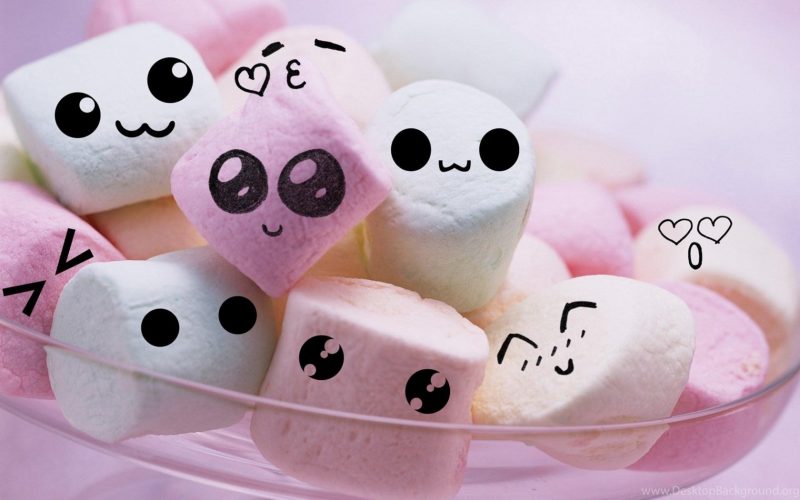
The cult American delicacy has not yet managed to become as popular among our sweet tooth, but in our stores you can already find this confectionery product of different sizes, colors and shapes.
This sweetness can be eaten just like sweets, roasted on a fire, added to hot cocoa, used to decorate sweet products.
In the decor of confectionery chewing marshmallows make cakes and cupcakes, as simply beautiful elements. It is also the main ingredient of the material for coating the surface and sides of the cake, called mastic.
How to melt marshmallows
It is not difficult to recreate marshmallows themselves and sweet pasta for edible sculpting from it at home. All recipes of such mastic are united by one process - melting marshmallows.
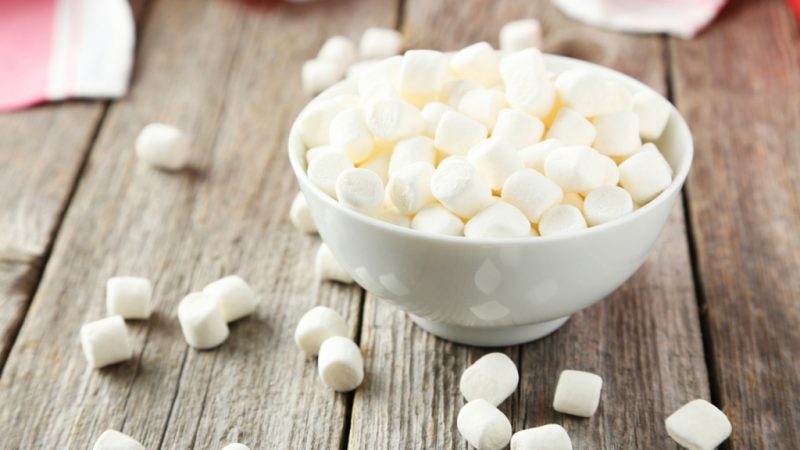
There are three ways to do this correctly:
- In the microwave.Marshmallows are placed in a glass or other bowl, the use of which is permissible in devices of this type, and heated at maximum power for 20 to 30 seconds.
- In the oven. In the absence of a microwave oven, you can melt the marshmallows in an oven with heating turned on at a minimum level. The increase in sweetness in volume indicates its readiness for mixing with powder.
- In the steam bath. A similar effect to the previous two methods can be achieved if the chewing marshmallows are gradually heated in a container above the steam, however, in this case the process will be longer.
Marshmallow mastic - a basic recipe
The basic formulation of marshmallow mastic includes the following components:
- 90 g chewing marshmallows;
- 5 ml of lemon juice;
- 8 g of butter;
- 105 g of powdered sugar;
- 45 g of corn or potato starch.
Stages of preparation:
- “Marmyshki”, soft butter and lemon juice to combine in one container and put to melt in any of the available ways.
- Mix sweet sugar powder with starch and sift.So that the mastic does not break during work, it is kneaded on the finest grinding powder. For the same reason, the use of corn starch rather than potato is more preferable.
- When the candies melt, mix the mass until smooth, sift the sugar-starch mixture into it in several stages and knead the sweet dough. Knead the mass should be up to plastic density and light gloss.
Before use, it is recommended that the paste be kept in the refrigerator for 24 hours.
With powdered sugar
In the sweet mass for modeling and topping cakes, chewing marshmallows plays the role of a bonding component for a loose base, which is often powdered sugar. Both ingredients are very sweet, and not everyone will like their final sugary taste, so it’s worth trying to make edible plasticine from dusted sugar, which will be easy to work with, and the decor from it will delight you with its taste.

List of required ingredients:
- 100 g marshmallows;
- 5 to 10 g of butter;
- 35 g of corn starch;
- 55 g of milk powder;
- 165 g of powdered sugar.
Cooking Technology:
- Starch, dry milk concentrate and powder pour in one container. Stir the mixture well with a whisk and pass through a fine-mesh sieve.
- Marshmallows with a small piece of oil heat to increase the size of marshmallows in a microwave or in a steam bath.
- Knead sweet dough from melted delicacies and loose ingredients.
After lying down for half an hour tightly wrapped in a film, the mass is absolutely ready, both to cover the cake, and to create sweet floral compositions or figures.
A simple option for beginners
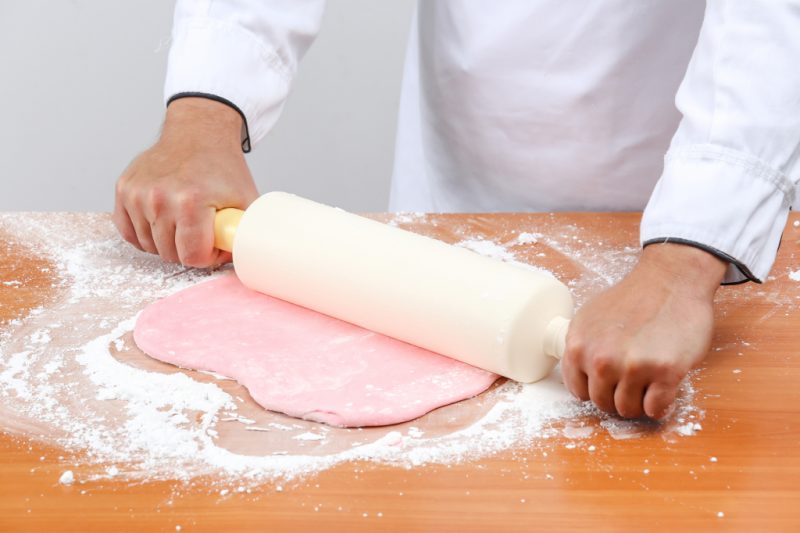
Culinary specialists making their first steps in pastry experiments can take advantage of a simple version of sweet pasta based on chewing marshmallows, which is prepared from only three components:
- 100 g marshmallows;
- 5 ml of lemon juice (or several crystals of citric acid dissolved in water);
- 220 - 250 g of powdered sugar.
How to make marshmallow mastic:
- In a bowl that can be used in a microwave oven, put marshmallows, pour in lemon juice, and put all this in a microwave oven operating at full power.
- When the marshmallows melt enough, we begin to interfere with icing sugar. First we do it with a spoon, and then proceed to kneading with hands. Here, when working with the test, a different amount of powder can go away, the main thing is to achieve its smooth and plastic state.
- Pack the mixed mastic in cling film and allow it to lie down for half an hour in the cold. Then you can begin to use it for its intended purpose.
Marshmallow chocolate mastic at home
Adding chocolate to chewing marshmallows helps to get a fairly plastic mass. In addition, chocolate immediately colors the mastic in a beautiful brown (chocolate) color.For this type of mastic, dark, milk or white chocolate is perfect.
The proportions of the ingredients for one portion of marshmallow chocomastics:
- 50 g marshmallows;
- 100 g of chocolate;
- 100 g of powdered sugar;
- 20 g butter;
- 30 ml of milk;
- 2.5 g of citric acid.
The sequence of actions:
- Chop the chocolate into small pieces, add marshmallow and butter to it and add citric acid dissolved in milk. Send these products to a steam bath and melt.
- Remove the mixture from the stove at the first sign of melting chocolate. Add the powder in small parts and knead the mass until elastic. At the end of cooking, put the mastic on a powdery table and knead like a dough.
For a more saturated chocolate color, at the initial stage of kneading, part of the powdered sugar can be replaced with cocoa powder.
Colored cake decoration
It is possible to prepare mastic for the cake not only in white or brown (chocolate) color. Sugar paste can be given to almost any color. To obtain bright saturated shades, food colors are used.
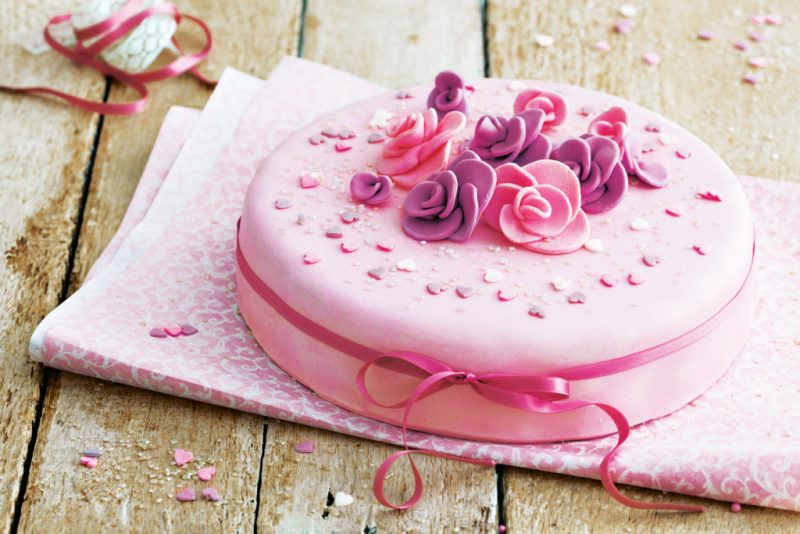
In this case, the gel is added directly to the finished mass for modeling, kneading it with your hands until the color evenly disperses. Dry dyes are diluted with water or vodka before adding. The second is preferable because it evaporates quickly, without significantly affecting the mass structure.
Without dyes, you can make colored mastic decorations by taking fruit and vegetable juices for coloring. True, the shades in this case will not be so bright, but they will turn out to be more delicate pastel.
Consider the technology of coloring sweet "plasticine" in various colors:
- Red. This color is traditionally obtained from beets. The root crop is peeled, rubbed on a fine grater and stewed for 15 minutes in a small amount of water with the addition of a tablespoon of lemon juice. Then the resulting liquid remains only to strain, and the dye is ready.
- Yellow. This color can be obtained from a solution of turmeric or carrots. To make carrot dye, the small chips obtained from the orange root vegetable are fried for 3 to 4 minutes in a small amount of butter, then the separated liquid is filtered through a fine sieve.
- Violet and blue. Squeezed mastic in purple will help squeezed red cabbage or blueberry juice. For greater color concentration, the juice should be evaporated slightly before use. Blue color can also be obtained from blueberry juice, after mixing it with a small amount of ordinary baking soda.
- Green. There are two ways to use it. First: tinting spinach juice. Second: first interfere with the yellow color, and then, adding blue, get the desired shade.
Getting colors by mixing the base (red, yellow and blue) you can not connect natural dyes with each other, they are added directly to the mastic.
How much marshmallow paste is stored
Marshmallow mastic is very hygroscopic, it is able to quickly absorb moisture and odors, therefore the main rule of its storage is hermetic packaging in a plastic wrap or plastic container without oxygen.

For safety, the mastic can be marked on the shelf of the kitchen cabinet without direct sunlight, but it is still better to transfer this product for long-term storage to the lower shelf of the refrigerator. The shelf life of marshmallows is up to six weeks in the refrigerator and up to several months in the freezer.
Before using the sweet “plasticine” from the refrigerator, you need to give a little time until it becomes room temperature. Then it should be kneading with hands until the desired plasticity is obtained.


